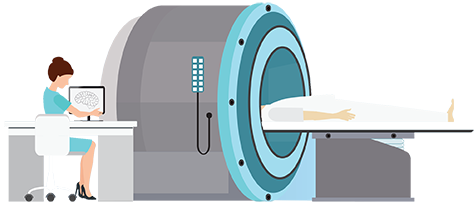

Finding a radiology school that fits your needs can be challenging. Begin the process by searching for radiology programs near you or online and requesting information. Requesting information can allow you to receive details on the specific radiology programs offered and the financial aid available to qualified applicants for radiology programs.
While they may be commonly called radiology schools, the truth is that many medical schools offer radiology programs. From traditional medical institutions, such as Harvard Medical School, to a rural veterinarian school, radiology programs in sonography, X-ray, magnetic imaging and radiation therapy are available to both new and returning medical students. For some students with prior experience in radiology, programs may even be available online.
Classes in radiology can cover how to handle radioactive drugs (used both in imaging machines and for combating cancer through radiation therapy), how to understand images from X-ray and sonographic machines, and how to safely operate MRI machines to avoid injury caused by the machine’s extreme magnetic field. Typical degree programs are generally available as 2- and 4-year associate or bachelor’s degree programs.
In some cases, such as with veterinary technicians and dental assistants who don’t typically work with radioactive machines, the full radiology school experience is not necessary. For these students, certifications in radiology are available and can typically be completed in less time than other programs.
Anyone who operates an X-ray machine, ultrasound or MRI machine, or who administers radioactive drugs is a type of radiologist. They can be employed in physicians’ private practices, major hospitals, dentist offices, urgent care facilities and veterinary clinics.
For radiologists practicing as sonographers or MRI, X-ray and ultrasound technicians, state licensure may be required. While requirements for licensure can vary by state, generally, certification from the American Registry of Radiologic Technologists is a required step. It should be noted that beginning in 2015, radiologists will be required to have earned an associate degree in radiology in order to be eligible for certification.
The U.S. Bureau of Labor Statistics (BLS.gov/oes, 2011) reports that radiologists employed as radiologic technicians, radiation therapists and as diagnostic medical sonographers earned, respectively, a nationwide median annual wage of $55,120, $76,630, and $65,210, as of May 2011. The BLS (BLS.gov/ooh, 2012) also reports that employment opportunities for radiological technicians and technologists is expected to grow by up to 28 percent from 2010 to 2020.